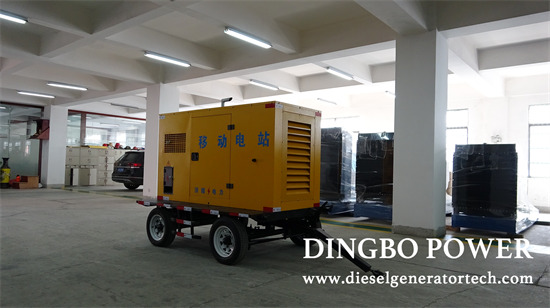Do you know the reason for the burning accident caused by the axial spacing during the installation of diesel generator bearing shells? A certain gas turbine generator had a burning accident that was different from the usual situation. The oil blocking ring on the back of the shell had severe friction with the journal flange, causing the entire part of the oil blocking ring to melt and flow into the bearing chamber. The black gold on the back of the working area of the bearing shell also melted within 30mm of the axial direction due to high temperature, and the journal flange was bright black within 40mm of the axial direction. At the same time, due to the large vibration of the bearing pads, the bearing support end cover bolts became loose, and a 3mm gap appeared at the top of the joint surface. The unit tripped and stopped, and there was no rubbing between the rotor and stator during the coasting process.

When starting the gas turbine, the rotor needs to move forward by 6.5mm. When running at full load, the forward displacement is restored, and the total expansion of the rotor is 16mm. When the generator is installed in place, the distance between the rear end face of the bearing and the journal flange must be greater than 6.5mm, and the distance between the front end face and the journal flange must be greater than 18mm. Upon inspection, it was found that during the cold state, the distance between the front end face of the bearing and the journal flange was 41.3mm, and the distance between the rear end face was 2.7mm. The distance value could not meet the needs of the unit's axial series operation, and friction was inevitable. Even if the unit quickly starts and leaves the friction state, it will cause damage to the bearing, but it is not easy to detect.
The burning of the bearing pads and the increase in movement are inevitable phenomena, and the failure of the rotor and stator to collide and wear is just a lucky phenomenon. Move the generator stator forward by 9.3mm to eliminate this hidden danger. When installing the generator bearing seat in a cold state, there should be an offset between the axial center of the rotor and stator to achieve consistency in the center during the hot state, eliminating vibration and axial force caused by electromagnetic force and uneven ventilation. The axial direction between the bearing bush and the journal flange should maintain the thermal expansion gap size specified by the manufacturer. During unit overhaul, the distance between the generator rotor flange and the bearing should be monitored.
Guangxi Dingbo Power Equipment Manufacturing Co.,Ltd is an early professional manufacturer of generators and diesel generator sets in China. The company has first-class national-level large-scale production and load testing equipment. Provide users with long-term diesel generator set sales, leasing, technical consultation, commissioning, maintenance, training services and generator set trusteeship business. If you would like to get more information welcome to contact us via sales@dieselgeneratortech.com.
Comments
Post a Comment